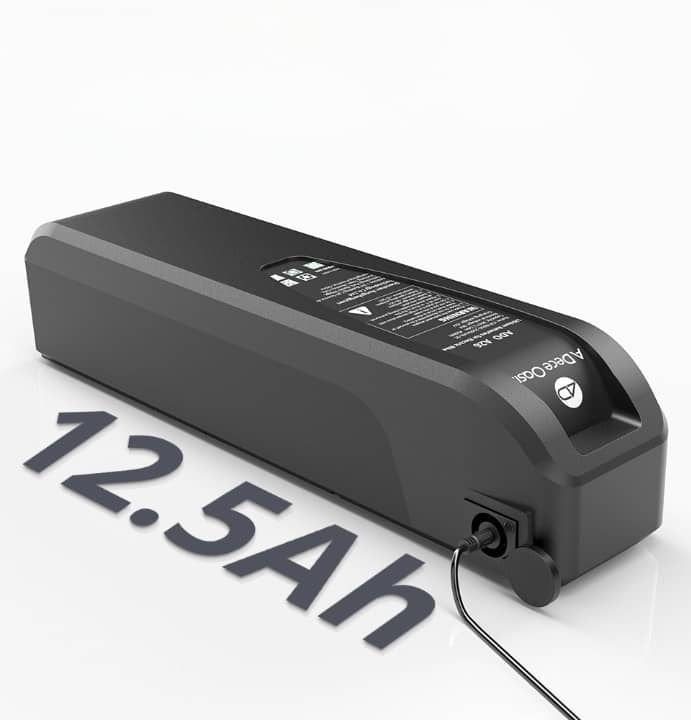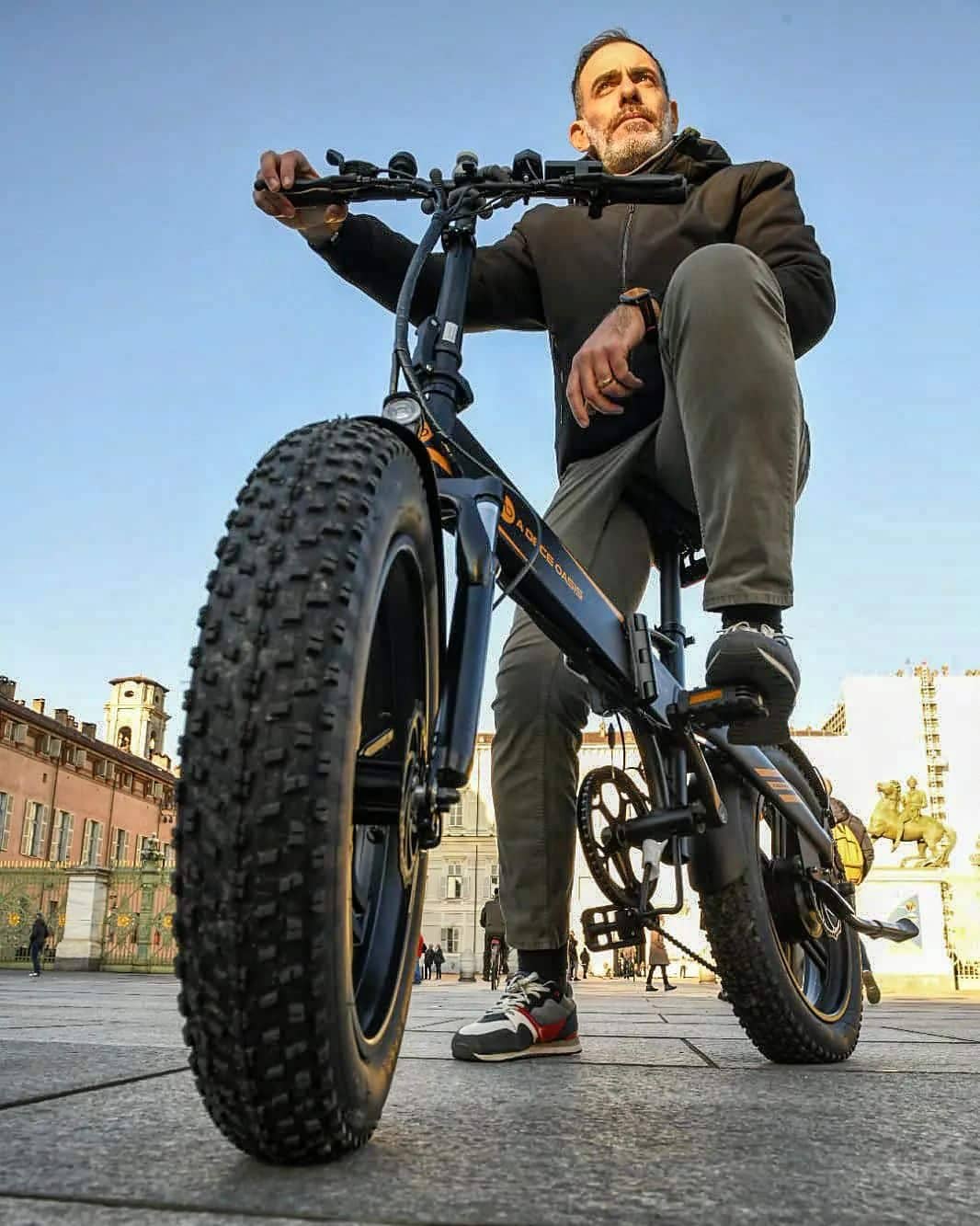How to buy an e-bike: Everything you need to know about electric bikes before you purchase
The popularity of electric bikes — or e-bikes — is increasing. And it’s no wonder why.
Electric bikes can help you climb hills, cover longer distances to work, and drive past other cyclists effortlessly during your Sunday walk.
Moreover, they open bikes to wider age and demographic groups, increasing the number of bicycles on our streets.
There are many different E-bike. As with conventional bikes, there are options for almost any riding style. Manufacturers are constantly developing lighter, more durable batteries with increased range. Prices are falling too.
We have identified some key features to look for in a electric bike when you purchase one.
Key Takeaways
- Consider your usage: Consider why you want an e-bike and how you plan to use it.
- Research different types: Familiarize yourself with different types of e-bikes, such as mountain bikes, commuter bikes, and folding bikes.
- Set a budget and consider all costs, including the bike, accessories, and maintenance.
- Look for reputable brands that offer good warranties and customer support.
- Consider the battery size and range, ensuring it meets your needs.
- Consider additional features such as lights, cargo racks, and fenders (mudguards).
- Familiarize yourself with local regulations regarding e-bike usage.
Difference between e-bikes and conventional bicycles
E-bike’s have many benefits when comparing them to conventional bikes, one of the main benefits and use cases for a e-bike, compared to a conventional bike is, the distance which can be travelled on a electric bike.
- E-bikes are powered by a electric motor which means users are able to go further and faster than they can with a conventional bicycle.
However the benefits do not stop there, unlike conventional bikes, provide useability for those who are not able to use traditional not electric bikes dues to injury or disability .
In terms of pricing, electric bikes can sometimes be more cost effective, when comparing to non branded models of non-electric e-bikes, the general pricing for electric bikes range from 200 -3000 at Emotis.
Consider your needs
When it comes to buying an electric bike, it’s important to consider your needs and preferences. The right e-bike for you depends on your intended use and the type of riding you plan to do. Here are the main categories of e-bikes and what makes each type unique.
Hybrids/Commuter E-bikes Hybrids, also known as commuter e-bikes, are a versatile option that can be used for commuting, leisure rides, and daily errands.
These bikes typically feature a classic upright riding position, with adjustable handlebars and seats. They also have plenty of carrying capacity, with racks on the front and back of the bike.
They come with up-to-date technology such as hydraulic disk brakes, making them a reliable and practical option for everyday riding.
Off-Road E-bikes Electric mountain bikes (e-MTBs) are becoming increasingly popular for their ability to tackle tough off-road terrain.
These bikes are equipped with powerful motors and features such as strong frame designs, high-performance suspension systems, and off-road tires.
Whether you’re looking for a bike for mountain biking, exploring dirt tracks, or long-distance off-road touring, an e-MTB can handle it all.
E-Cargo Bikes E-cargo bikes are designed to make moving heavy loads a breeze. With large boxes in front of the rider, these bikes can be used as a genuine replacement for many car trips.
They come in longtail and shortail designs, with the distinction between the two being the amount of carrying space at the rear.
Although e-cargo bikes are not cheap, they offer a practical and eco-friendly solution for transporting goods.
Folding E-bikes If you’re looking for a bike that can be easily transported and stored, a folding e-bike might be the right choice for you.
These bikes are well-engineered, lightweight, and portable, making them ideal for commuters who need to take their bike on public transportation or those who have limited storage space.
Crossover and Do-It-All E-bikes Finally, crossover and do-it-all e-bikes are becoming increasingly popular as manufacturers realize that adding a motor to a bike expands its capabilities.
These bikes often have features of several different types of e-bikes, such as step-through frame designs for easy mounting and dismounting, as well as carrying capabilities.
Whether you’re looking for a bike that can handle multiple use cases, these bikes are a versatile option to consider.

Battery
E-bike batteries are a crucial component of electric bicycles, providing the power that drives the motor. The majority of e-bike batteries on the market today are lithium-ion, due to their high energy density, efficiency, and cost-effectiveness.
Lithium-ion batteries are rechargeable and offer a long lifespan, with some models capable of retaining 80% of their original capacity even after several hundred charges.
They are also relatively lightweight, making them ideal for use in e-bikes.
When shopping for an e-bike, it’s important to consider the battery’s capacity, measured in watt-hours (Wh). A larger battery will allow for longer rides without recharging, but will also add weight to the bike.
Some e-bikes have batteries that can be easily removed for charging or replacement, while others have integrated batteries that cannot be removed.
Another important factor to consider is the battery’s maximum charge rate, measured in amps.
A higher charge rate means that the battery can be charged more quickly, which can be especially useful for those who need to charge their bike quickly between rides.
In addition to these basic specifications, there are also different types of lithium-ion batteries to choose from, including standard lithium-ion, lithium-polymer, and lithium-ion manganese.
Each of these battery types has its own unique benefits and drawbacks, so it’s important to research and compare options to find the right battery for your needs.
Overall, e-bike batteries are an important factor to consider when choosing an electric bicycle. With a range of capacities, charge rates, and battery types available, there is a battery option to suit the needs of any e-bike rider.
Size and Weight
E-bikes, have traditionally been known to be quite heavy, but recently companies have been striving and competing to create lighter more efficient electric bikes, many electric bikes now weigh 20kg or less.
When deciding what electric bike is best for you, its always good to pay close attention to the weight of an electric bike, especially if you may need to lift it onto your car rack, or upstairs, as a way to reduce the weight of your electric bike is to remove the battery before lifting.
Pedal Assist and Throttle
There are two types of Electric motor drive systems: pedal assist and throttle. In pedal assist, the motor only works when you step on the pedal, whereas in throttle, the electric motor works even when you are not stepping on the pedal. There are also several bikes with both pedal assist and independent throttle.
A typical pedal assist system uses some sensor to determine the pedalling. The torque sensor determines how hard you push and gives the motor a corresponding amount of power. You can get a more subtle assist effect when they work well than the Cadence option.
E-bike charging
Electric bikes are a fantastic mode of transportation that offer the ease of pedal assistance and are energy efficient and emission-free.
To ensure that you get the most out of your electric bike, it’s important to understand how to properly charge your battery.
This article will provide you with all the information you need to know about charging your electric bike, from where to charge it to how long it will take.
Where to Charge Your Electric Bike: Electric bikes can be charged almost anywhere. Most e-bikes use a standard 3-pin plug that is compatible with wall sockets, making it easy to top up your battery while on the go.
You can charge your e-bike in a number of public places, such as cafes, pubs, libraries, or even while you’re at work.
How to Charge Your Electric Bike: The method of charging your electric bike will depend on the model.
You’ll need to consult the owner’s manual to familiarize yourself with the charging procedure, but most e-bikes can be charged simply by turning off the battery pack, removing it from your bike, and connecting it to a wall socket using the provided charger. It’s important to follow these tips when charging your e-bike:
- Only charge your battery when necessary, as charging it above 80% of its capacity can accelerate degradation.
- Recharge every 24 hours and don’t let the battery fall below 25% as this can reduce its capacity over time.
- Leave the newly charged battery for 10-15 minutes before refitting it to your bike.
- Allow your battery to cool down after a ride before charging again.
How Long Does it Take to Charge Your Electric Bike: It may take up to 24 hours to fully charge your electric bike for the first time, but after that, most e-bikes can be fully charged in just 3-8 hours. This information can be found in the product specifications and your e-bike will be fully charged before delivery.
Do Electric Bikes Charge as You Pedal: No, standard electric bike batteries can’t intake and output energy simultaneously. However, some premium electric bikes offer the feature of regenerative pedalling, which can produce a small electric current to slowly recharge your battery while you ride.
Charge Cycles: Electric bike batteries are designed to last for many charge cycles, with some models capable of being recharged up to 1000 times before needing a replacement battery.
This makes electric bikes a highly cost-effective and environmentally friendly transportation option.
Range
In most cases, you are unlikely to run the battery flat if you go on a fully charged battery during a normal trip. However, the “range” of your electric bike – or the total distance you can drive before the battery runs out – will be essential when it comes to charging.
The longer the range, the less you will have to charge the battery. It is here that watt-hours (W/h) come into play. If you have a 300W motor powered by a 300W battery, it can take up to 2-4 hours to charge to full power.
In practice, there are many more variables. First, you will never have a battery running at the full range all the time. Most likely, you will use different modes. Some of them, for example, will have eco-modes to extend battery life.
In addition, the weight of the cyclist, the area you are driving, and even the weather can affect the battery’s range.
Mid-drive motor or Hub Motors
The motor and battery greatly impact the weight, range and performance of your electric bike; choosing the right type of motor is probably the most important solution you will take. Motors are divided into Hub drive motors and mid-drive motors.
Hub drive motors are in the wheel, front, rear or both, and they drive you into motion, accelerating the rear wheel. Mid-drive motors are built into the frame between the pedals, and their power is added to increase the force of pressing the pedal. This is a subtle but important distinction.
Easy to Assembly
Many people can ignore this point. Some of your new e-bikes are almost fully assembled (e.g., folding bike); in most cases, you must complete the assembly.
You can do it yourself or with the help of others, as many companies producing electric bikes provide step-by-step instructions on their YouTube channel, but if the steps are complex, you can not cope; Then you need to contact the bike store for assembly, which costs money, so it is included in the price of your electric bike. It may not affect your purchase decision, but you should be aware of it.
Service and Maintenance
Failure and repairs can be inevitable for any electronic equipment, so choosing a motor that can be repaired is another key solution. Store mechanics sometimes cannot repair unknown brands due to a lack of spare parts or diagnostic tools.
In addition, you must also carefully read the warranty service and effective brand obligations. Only the company can gain the favor and trust of consumers, providing the greatest guarantee of benefits for the client.
Add-Ons
E-bikes are sold with a range of applications that facilitate their use. Here are a few things to look out for.
Lighting: Many Electric bikes are often sold with lighting, or you can add your own. They are a safety requirement if you plan to drive at night.
Racks: The additional power of E-bike makes them ideal for transporting goods. If you want to use this, you will need a trunk above the rear wheel.
LCD: A liquid crystal display is often installed over the steering rear wheel. They illustrate battery level, maximum speed and pedal power assist information.
Smartphone Integration: Some e-bikes offer smartphone integration totally different from a normal bike. This allows you to connect the bike to your smartphone and install applications that provide useful information, such as GPS coordinates.
Security: E-bikes are expensive and are, therefore, a popular target for thieves. Obviously, a reliable bike lock or rear wheel locks are a must, but you should also think about GPS tracking, which will help you find a bike if it is stolen.
Electric bike Price
Prices for e-bikes range from £499 to over £7000. Some advice is avoiding E-bike costing less than £300 as they are likely to have poor battery life.
As with traditional bikes, you get what you pay for an electric bike. You will have to pay more for these features if you want the largest battery, power, or strong off-road capabilities.
FAQs
Does the e-bike have a warranty?
Answer: Please ensure you have a warranty letter with your e-bike. You can rest assured that the manufacturer will guarantee your product and repair it if you encounter any problems.
What kind of terrain is an e-bike used in?
Answer: There are many different designs for e-bikes. Some are for rugged off-road use, while others are for smooth urban areas. Consider where you want to use it and choose the model that fits your needs.
Are there any additional features or accessories that the e-bike needs?
Answer: Consider whether there are additional features or accessories you may need, such as rear carriers, lights, and locks. Check if these features are standard or need to be purchased separately.
Is an e-bike easy to maintain and repair?
Answer: Yes, but you have to check if it is designed to be easy to use and perform. Regular maintenance, such as cleaning and battery replacement, is necessary for prolonged use.
Final Verdict
Buying a new bike can be expensive, especially for an e-bike. It is especially true for E-Bike. Before depositing your credit card, you need to learn a little about what you will do. Before making the final decision, you have to take a test ride.
The tips in this guide will help you on your e-bike purchase journey. Keep these in mind before you buy the next E-bike. If you’re looking for a good, reliable, and affordable E-BIKE, you might find it in Emotis products.





